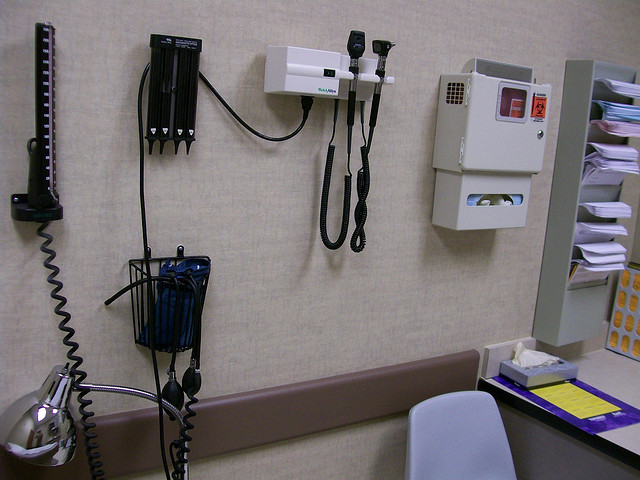If the unfamiliar creates anxiety, then a visit to the hearing specialist is especially nerve-racking. While almost all of us have experience with the family doctor and the local dentist, the visit to the hearing specialist could be a first.
It certainly would be nice to have someone teach you the process upfront, wouldn’t it? Well, continue reading, because as you’ll see, the process of getting your hearing examined is usually straight forward, comfortable, and pain-free — with parts that can actually be fun.
So here’s how it will go:
Just after you arrive at the office, you will check in with an employee at the front desk who will hand you some forms to fill out. Shortly after filling out the forms, a hearing specialist will come with you into a room to start the hearing examination, which is composed of four parts:
Part 1: Case History

The hearing specialist starts off the process by getting to know you, your health history, and your hearing loss symptoms. Preparation for this step is important, because this is where you get to relay to the hearing specialist the particulars of your hearing loss, what you expect to gain from treatment, and your unique hearing needs.
This part is all about you: what do you want to achieve with enhanced hearing? Do you have the desire to play a music instrument again? Do you wish to be more involved in work meetings? Do you desire to be more lively at social gatherings? The more you can reveal to your hearing specialist the better.
Next comes the testing.
Part 2: Otoscopy
The first diagnostic test to be carried out is termed an otoscopy. An otoscope is used to visually assess the ear canal and eardrum to check if your hearing loss is associated with infections, earwax accumulation, or blockages. If the reason for your hearing loss is something as uncomplicated as earwax buildup, you could possibly begin hearing better within a matter of minutes simply from professional earwax removal.
Part 3: Tympanometry
The second test is termed tympanometry, used to test the eardrum and middle ear. A device is placed into the ear that will adjust the air pressure, measuring how your ear reacts to numerous pressures.
To have an understanding of this test, you have to first know that hearing loss is categorized into one of two general groups:
- Sensorineural hearing loss — this is the most common hearing loss. It is also referred to as noise-induced hearing loss and it involves damage of the nerve cells of hearing.
- Conductive hearing loss — this hearing loss results from clogging or obstructions that restrict sound conduction before the sound hits the nerves of hearing.
Tympanometry is a test that can help to rule out conductive hearing loss, to make certain that there are no blockages, infections, or middle-ear-bone ailments. Conversely, Audiometry, which is considered next, will measure sensorineural hearing loss.
Part 4: Audiometry
The last group of tests will be conducted in a soundproof room. These tests are collectively referred to as audiometry and will assess your hearing range and sensitivity. Audiometry is the best method to measure sensorineural hearing loss.
With the use of an audiometer, the hearing specialist will be ready to pinpoint:
- Which frequencies you can hear comfortably and which you have a hard time with.
- The minimum decibel levels, at different frequencies, at which you perceive sound.
- The precise calculations correlated with your hearing loss (as documented on an audiogram).
- Your capacity to grasp speech, with or without background noise.
The test itself, from your outlook, will be comfortable and very simple. You will be presented with sounds and speech through earphones and will be asked to reveal when you can hear the sounds by pushing a control or lifting your hand.
Reviewing results and planning treatment
After the testing is complete, your hearing specialist will talk about your results with you. If your hearing loss calls for medical or surgical treatment (due to infections or middle-ear-bone problems, for instance), your hearing specialist can make the appropriate referral.
If your hearing loss can benefit from assistive listening devices or hearing aids, your hearing specialist will collaborate with you to pick the perfect solution for you, your budget, your lifestyle, and your aesthetic concerns.
Pretty easy for a lifetime of better hearing, isn’t it?